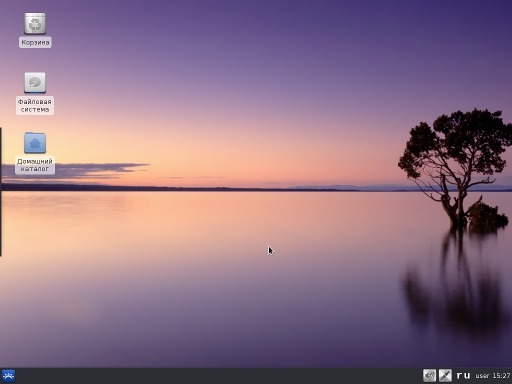Domestic Linux distribution - “OS” for server and desktop systems: the new BolgenOS of the national scale?

Recently, the National Center for Informatization (NCI) company, which is owned by Rostec State Corporation, introduced a new GNU / Linux distribution for server and desktop systems. This distribution is called OS (OS-RT). It is available for download now. Who tried the system, they say that there is a dull wallpaper, this is no problem. What, in addition to wallpaper, offers us "OS"?
Its feature, according to the authors of the project, is focusing on information security. More specifically, the developers are positioning the distribution as a platform for working with information that constitutes a state secret. Osi’s customers already have various authorities, state corporations and companies with state participation. In the free market, as reported, "OS" can also be used without restrictions. Soon in all offices of state-owned companies in the country? Let's look, while we will look a few technical details.
As for the hardware platform, the distribution can be installed on workstations in offices, servers and data centers. The distribution kit includes software launchers for Windows.
The basis of "OS" - RHEL / CentOS 7 and a number of elements from Fedora Linux. The desktop is based on Xfce. Available packages include LibreOffice 5.2.6, GIMP 2.8.16 graphics editor, Inkscape 0.91 vector editor, Blender 2.76 3D modeling system, image and document viewers. The browser here is Firefox, the email client is Thunderbird. The distribution kit copes with multimedia due to the presence of the VLC player, smplayer 17.2.0, mplayer 1.3, ffmpeg 3.1.6, a set of codecs with support for H.264, H.265, VP9, AAC, Opus, and a collection of drivers for webcams.
')
As for server components, among the means of data storage, developers distinguish the following server applications and network protocols:
* remote access via SSH;
* network file systems NFS and Samba4;
* Apache web server;
* FTP server vsftpd;
* CUPS print server;
* domain name server BIND;
* server time NTP;
* directory server OpenLDAP and 389-ds;
* Kerberos authentication server;
* Ansible configuration management tool;
* Zabbix and Nagios monitoring tools;
* VNC-server for remote access with a graphical interface;
* IPMI and SNMP protocols.
The virtualization environment is the KVM hypervisor, plus there is a cluster system that “is designed to build a protected geographically distributed disaster-resistant cluster with load balancing and to build secure cloud systems.”

Well, plus supported software such as:
* 1C: Enterprise version 8.3 (server and client);
* SAP platform (server and client);
* My office;
* Dr. Antivirus Web.
It is strange that there is no support for Kaspersky Anti-Virus.
More detailed system features are available at this link . True, the site of the company that developed this innovation, now for some reason lies. Probably everyone is pumping a new distribution.
By the way, on Opennet, some users noticed that OSI also has a clone called OS Aurora. And yes, the site of this clone is hosted on the same ip as the OS website. Coincidence? A rhetorical question.
What else? Oh yes, the system developers have already submitted an application for the inclusion of the OS OS in the registry of domestic software. Now this application is being reviewed by experts of the Ministry of Communications and Mass Media. Well, what, import substitution after all.

Source: https://habr.com/ru/post/326970/
All Articles